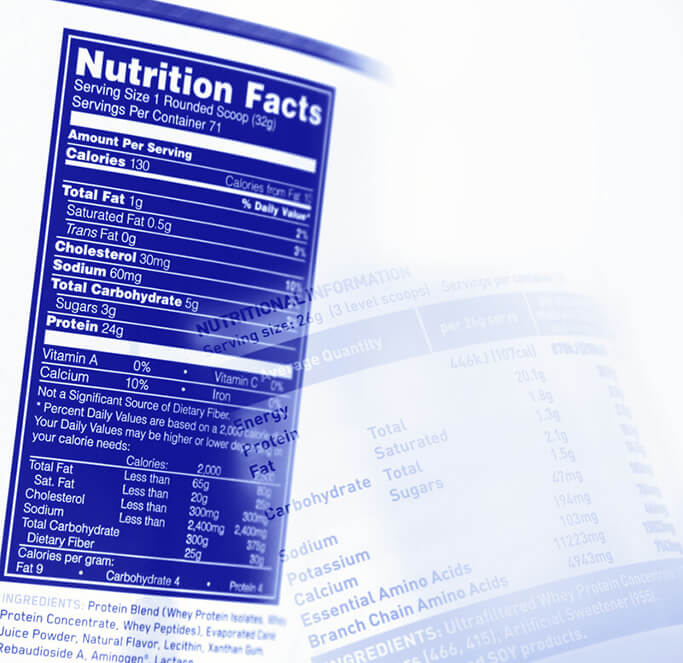Reading food labels in recent years won’t help you much. Mostly because most of the ingredients are written in some form of code or words that are hardly understandable. Many labels are adding meaningless words for marketing purposes, but they are just misleading consumers.
Food labels are confusing everyone, but especially people who have a vegan diet. Some foods that look vegan, may contain non-vegan items. Food labeling regulations are complex, making it harder for consumers to understand them. But whether you are a vegan or not, it is important to know what some items and ingredients mean, mostly because of your health and awareness of what you consume.
Companies are tricking their customers
Sadly, companies fool their customers to gain profit and add fewer natural ingredients and more additives and taste enchases than ever before. That is why we should turn to more convenient brands and types of food, so the producers understand that there is a higher demand for quality food.
However, we came to the point that quality is poor and food prices are rising. With food prices getting higher due to various circumstances, it is almost impossible to expect that the food is going to be 100% natural, therefore it is your responsibility to take control of what you eat.
Those who think they have no time for healthy eating, will sooner or later have to find time for illness.
Edward Stanley
Besides things you consciously don’t want to put in yourself, because it is against your beliefs, some things are poisonous and might harm you. Dr. John La Puma explained that you should watch out for these ingredients on product labels:
- Brominated products: Affecting neurologic behavior and might be carcinogenic
- Artificial sweetener: Believe it or not – it increases your risk for diabetes
- Diacetyl: Increases risk of Alzheimer’s disease
- Hydrocarbons: Carcinogenic and hormone-disrupting
Also Read: Dive Into Your Plate and Discover How Unhealthy Your Diet is.
Food Labeling Basics
What is mandatory on food packaging is the Nutrition Facts table. It needs to tell you about nutrients, vitamins, minerals, and ingredients. Every country has different laws about what should be on a food label. It is important to avoid all the marketing tricks on the package you want to buy and understand the true ingredients of the product.
For you as a consumer straight list of ingredients is the most important thing to read. However, these ingredients aren’t always understandable. They often may contain names that most people can’t define. Did you know that carmine found in red food coloring comes from boiled insects? That is why people have to take food labeling more seriously. If you are vegan, you don’t want to accidentally eat something that comes from an animal. That is why you should learn how to recognize suspicious items on food packaging.
Here are some more weird examples:
- L-Cysteine – Amino acid collected from duck feathers or human hair often found in some types of bread
- Gelatine – Used in jelly products, gelatine comes from boiled pig skin, cow bones, and ligaments.
- Lanolin – Used in chewing gums to make them softer, it is an oily substance from sheep’s wool.
- Vitamin D3 – If it doesn’t have a “vegan” sign, it most likely comes from fish liver
Be careful with the “E numbers”
Usually, those additives are suitable for vegans, however, you should be careful with the following names:
- E120 Carmine, also known as cochineal. Those are crushed-up beetles used for food coloring.
- E441 Gelatine. As mentioned before, gelatine comes from bones, so make sure there is a “vegan” sign on the label you buy.
- E904 Shellac. Mostly used for glazing. It comes from the secretions of an insect, better known as a “lac bug.”
Food Labeling Tricks to Watch Out for
The examples below are very hard to track or monitor, so labels on these kinds of products can lead to misconceptions. Sentient Media revealed the most common marketing tricks on food labeling, that don’t mean anything.
1. Organic Food Labeling
Products with the sign “organic” must have at least 95 percent organic ingredients. Those with fewer organic ingredients are labeled as “Made With Organic Ingredients.” Different states have different rules. In the US under organic food labeling, means also that animals must have access to go outdoors. Sadly, nobody can monitor how much that is, it can be five minutes per day, or even zero… Who knows? Different vegan organizations and communities were going undercover to slaughterhouses and have witnessed that animals are still treated very poorly and living in terrible conditions.
2. Free Range Food Labeling
The truth behind free-range food might also be a scam. Same as for Organic farms, farmers are treating animals in poor conditions and they experience different kinds of abuse. Animals live in small cages and often they don’t see any daylight. There have been dozens of videos online, which show how farmers abuse animals. Also, no inspection actually can monitor and confirm the “free range” label.
3. Sugar-Free or No Sugar-Added Labeling
This sign appears often on product labels, which use artificial food sweeteners or other additives that replace sugar, but might be as bad as the actual sugar or even worse. For example, Saccharin and Aspartame might be carcinogens. While “Sucralose” can cause liver poisoning and swelling of the kidneys.
4. “Rainforest Alliance” badge
The Rainforest Alliance certificate intends to improve the economic, social, and environmental conditions while helping local farmers and the environment. However, there have been many issues with that statement. In 2015, a BBC investigation found that workers of one brand of an Indian Tea (that was certified and approved by the rainforest alliance) lived in poor conditions and were receiving lower wages than they should.
5. “Dolphin safe” badge
In a recent “Seaspiracy” documentary, the truth behind the “dolphin-safe” logo on tuna cans has been revealed. The logo and certificate indicate that during the mass Tuna fishing, no Dolphins were caught in the fishing net. In the documentary, workers in the agency that is in charge of the “Dolphin safe” certificate, could not answer if any of the dolphins were caught on the open sea. And if yes, how can they know about it? Because nobody really knows what is happening in the middle of the ocean.
Food Labeling for Vegans and Vegetarians
In case you don’t have to worry all the time about what might be in your food, the best practice is to buy whole food and avoid any processed food. In case you are not able to prepare the food by yourself, you should check on your phone for all the suspicious ingredients.
 Did you know that even sometimes vegan-like food is not completely vegan?
Did you know that even sometimes vegan-like food is not completely vegan?
For example, milk powder can be found in broccoli. So if you see broccoli in plastic wrap, check out if there is milk powder on the label. It happens with many types of fruits, that might be covered in beeswax to keep longer the freshness of the product.
And not in food only, but things like this are everywhere, mostly in the beauty industry. A lot of makeup brands contain animal products under suspicious names, some examples that might serve you can be found in our previous article.
Conclusion
So, imagine how many times you consumed something, that you didn’t want. That’s not dangerous just because it can hurt people’s feelings and beliefs, but it may also cause allergic reactions, which can be life-threatening. Keep in mind that even with the most obvious vegan foods, you should be careful in the future.



